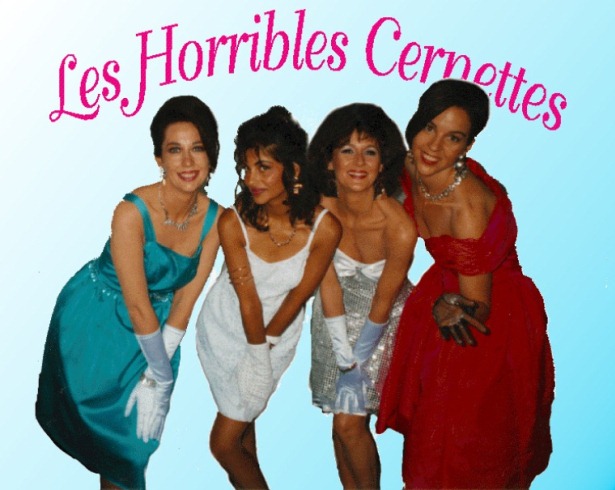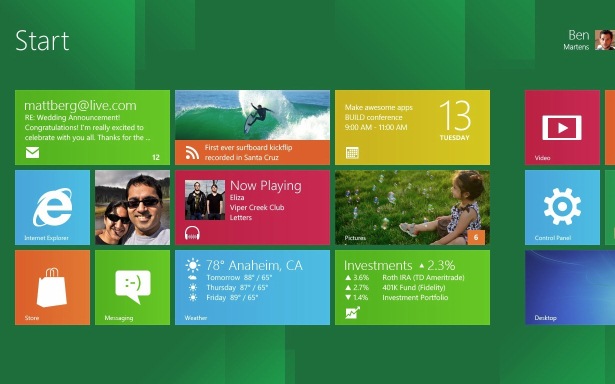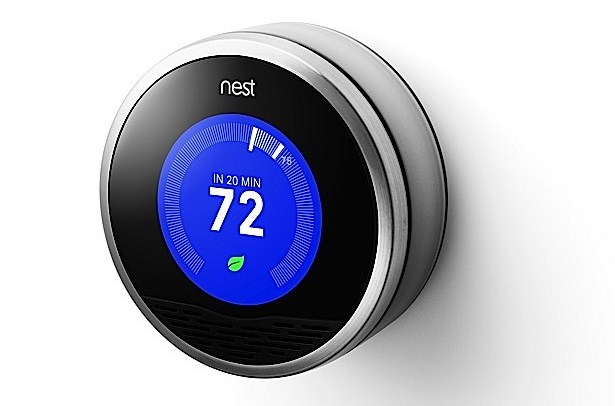2012 technology trends in marketing
In 2012, there will be two types of technology that will matter the most for brands, says Wunderman's Gregory Roekens: personal technology on the consumer side and marketing technology on the business side
When you come to you think about it, e-babies are now entering adulthood. By Christmas 1990, Tim Berners-Lee had built all the tools necessary for a working web: the first web browser, the first web server, URL, HTTP, HTML and the first web pages. The first real website was published in mid-1991 and during the same year, servers appeared in other institutions in Europe. By December 1991, the first server outside the continent was installed in the US at Stanford Linear Accelerator Center and the very first photo published on the web was uploaded by Tim Berners-Lee himself in 1992, an image of the CERN house band Les Horribles Cernettes.

So babies born in the early 90s are now in their early 20s and this is highly significant. While the previous generations may have had a more reserved approach to digital adoption, the vast majority of e-babies naturally embrace digital technologies. They will influence the older generations that will want to (or have to) stay in touch with the rapid evolution to do the same.
Nielsen has recently reported that the majority of US adults under 35 years old now own a smartphone. Another interesting report from Nielsen shows that electronic devices topped the list of most wanted gifts for this holiday season.
There’s obviously no doubt that 2012 will be another year of major technological disruption and behavioural adaptation. New innovations will continue to change how consumers interact with brands and if you are a marketer, 2012 will be another fantastic and exciting and you’ve got your work cut out.
To help with the evaluation and impact assessment of emerging technologies, it's best to categorise them into two main categories: Personal Technology (consumer-led) and Marketing Technology (business-led). Indeed in 2012 personal technology consumer adoption will carry on increasing exponentially and will require brands and businesses to implement new marketing technologies to reach those connected consumers through new and ever-increasing channels.
Personal technology: four screens and a cloud
From a consumer point of view, there’s a lot of exciting developments in personal technology to look forward to in 2012, mainly around four screens and the cloud.
Mobile
Pretty obvious and a key component of the multi-screen revolution. Mobile encompasses a great many things, from thousands of apps to enabling location based-marketing. However, for me there are two main emerging mobile trends that are worth watching in 2012: Virtual Personal Assistance and Second Screen apps. I wrote about the significance of A.I. based personal assistance last year and when you think that Siri is still in beta there’s absolutely no doubt that this will be an important technology to watch in 2012, and particular important for brands to embrace. Best Buy, for instance, thanks to the open API approach they adopted a couple of years ago, is leading the way by announcing recently that its entire catalogue was now available through Siri. Second screen app technologies such as Zeebox or GetGlue will also see significant adoption this year.
Daily design news, reviews, how-tos and more, as picked by the editors.

Tablets
Again pretty obvious and the reason I separate it from the mobile trend is that tablets are mostly used in a different context, called the “lean-back experience”. In lean-back mode, consumers are effectively in a “don’t-make-me-work” mind-set which is significantly different from a “lean-forward experience” that laptops and PCs more traditionally provide, and indeed the “on-the-move” mobile experience. Sales of tablets are set to double in 2012 and we can expect tough competition between Google, Microsoft and market leader Apple. Website owner’s priority for 2012 should be to optimise their online properties to tablet, especially with regards to non-flash interaction and enabling the ‘swipe effect’ that touchscreen offers. Obviously apps will remain a strong growth area and brands will need to assess carefully what features make sense to port over to an app versus keeping them within the website.

Desktop
It might surprise some to see desktops in a trending list but it is still central to the multi-screen revolution. Desktops and laptops are still the most used devices for internet access with 93 per cent of desktop/ laptop versus 7 per cent of mobile/tablet according to GlobalStats. One of the challenges facing brands in 2012 will be to ensure that their main online channel doesn’t deteriorate because of a shift of attention and/or funding towards newer channels. Another reason why desktop experience will matter in 2012 is the launch of Windows 8 which will try to bridge tablet and desktop experiences through the new metro style paradigm. It is important to note that in 2012, and for the very first time, Microsoft will have an operating system in all four main screens: desktop/laptop, tablet, mobile and TV (through the Xbox and don’t forget Surface 2.0). All these devices will feature the Metro Style paradigm which not only makes touch based interaction more intuitive but also lays the foundation for gesture recognition based interaction as we can already experience with the Xbox Kinect.

Television
Even more surprising than desktop maybe, television is set for a comeback in 2012. There are wild rumours that Apple is working on an Apple Television Set (not to be confused with Apple TV). Interestingly, for once Apple is more of a follower in this space rather than the innovator as Microsoft has been working hard and taking leadership in the sector thanks to its successful Xbox and Kinect strategy. The latest release of Xbox software is really putting it at the centre of the Family Entertainment Hub where Kinect is part of the entire interface experience and not merely a subset. Second screen apps as described above will help get people back in front of their TV screens, whether directly through the main screen in their lounge or via their tablet or mobile devices.
Touchless
As per the last point, we can expect to see a growing number of ‘touchless’ (ie: gesture based interaction) devices. Microsoft is expected to release a commercial and PC based version of Kinect (including new Kinect hardware) in the early part of 2012 which will be an exciting opportunity for brands and especially for those with bricks and mortar points of sale. Voice recognition is another important and exciting touchless means of interactivity and it is fair to say that after many years of failed attempts, Apple Siri, Google Speech and Microsoft Bing Speech have now become remarkable propositions.
Cloud
Underpinning and connecting the four screens together is the cloud. And the big three have understood that: Whether it is Apple with iCloud, Microsoft with SkyDrive or Google where anything you do with Google is cloud based. Other cloud providers such as Dropbox, SugarSync or Box.com should also see growth in 2012. A cloud-based + Open API vision will be particularly important for any brand that wishes to successfully interact with its customer in 2012.
Internet of Things
This has made the ‘next-year-top-trend’ list for a few years now and like mobile in the past it is gradually gaining momentum and importance. The fact is that internet of things requires sensors and connectivity in everything and this will take another few years to happen. Having said that though, there are interesting developments such as the Nest thermostat or Mavia Connected Car and we should see even more startups (or grown-ups) surfing the wave in 2012.

Marketing technology: bridging customer experience and customer intelligence
From a business standpoint, 2012 will be in large part about connecting the dots together. Connected consumers want connected experiences which require connected data. Obviously easier said than done, one possible approach to connect experiences across an increasing number of touchpoints is to establish a Marketing Technology Office within the brand’s organisation.
The main goal for the marketing technology office is to bridge customer experience and customer intelligence together. Increasingly, customer experiences can be tracked and measured thanks to online and offline sensors which generate an ever-increasing amount of data, often called big data. Those big data repositories can then be turned into customer intelligence to drive marketing efficiencies and ultimately deliver an even greater customer experience. This is a world where creatives and scientists come together and where marketing automation and predictive marketing will be core technologies.
This is obviously a succinct list based on my experience of working in digital with a variety of brands, my humble opinion and personal online aggregators. I’m very keen to get your views or stand corrected so feel free to comment below to share your lists and opinions.

The Creative Bloq team is made up of a group of art and design enthusiasts, and has changed and evolved since Creative Bloq began back in 2012. The current website team consists of eight full-time members of staff: Editor Georgia Coggan, Deputy Editor Rosie Hilder, Ecommerce Editor Beren Neale, Senior News Editor Daniel Piper, Editor, Digital Art and 3D Ian Dean, Tech Reviews Editor Erlingur Einarsson, Ecommerce Writer Beth Nicholls and Staff Writer Natalie Fear, as well as a roster of freelancers from around the world. The ImagineFX magazine team also pitch in, ensuring that content from leading digital art publication ImagineFX is represented on Creative Bloq.
